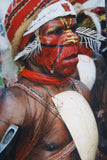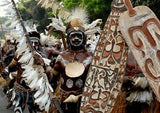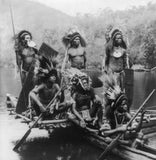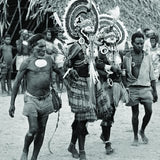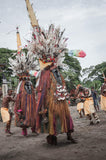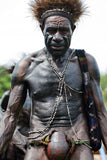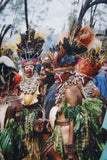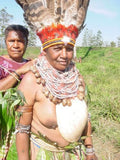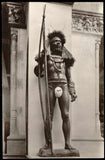Bilas Melomelo Tribal Bailer, Cymbium Shell & Currency belt, Called Gam by the Primitive Mendi Tribe’s “Big Men” that wear them as Penis cover & pectoral Adornment, Currency, Bride Price, Collected in late 1900’s, Southern Highlands, Papua New Guinea BAL6
Bilas, baler, bailer, Gam, melo melo, melomelo.
These Bailer Shells are the most prestigious ornaments in the Southern Highlands - valued much above anything else.
Rare Older Baler Shell called “Gam”, a Prestigious Male Pectoral Ornament, also used as bride price, exchanges, currency etc…
Strung on a shell (pieces) money exchange belt, and worn as a pectoral ornament or as a penis cover
BAL6.
This shell has a dark rich patina that shows age and use.
Good Condition, Rare, Huge, Highly Collectible
HUGE: 8" X 6" (for the baler alone).
Collected on the premises
Mendi Tribe, Primitive Culture of Papua New Guinea Southern Highlands
This South Pacific Authentic Bailer or Baler Body ornament is also called Melo melo (melomelo) or Cymbium, it is a genus of sea snails, marine gastropod mollusks in the family Volutidae. One of the largest shells in existence.
Such decorative items were only worn by the “Big Men”, the initiated men and the Shamans of Papua New Guinea during special ceremonies, festivals & rites, either as a head band, as a pectoral ornament or as a groin phallus cover. (A similar collector piece was featured at the exhibition "The Art of Papouans" at the Museum” La Charité” in Marseilles – France)
When this volute is not worn as a decoration, it is often collected for food by local fishermen, to use as scoops for powdery substances in local markets and also traditionally still utilized by the native fishermen to bail out their leaking boats, and where the common name “baler”, the tool, came from.
Such rare large pieces were originally found on the beaches of the Gulf of Carpentaria.
In traditional times, Such an item likely made its way from the Papuan Gulf into the interior of the Peninsula through trade. Such shells are very important in the traditional tribal industry, if you can call it such. The relatively flat surface near the lip of the shell can be cut into a woomera. It has many uses besides being worn as a body ornament or penis protection, some being: as currency (in certain areas of New Guinea, bailer shells were important as bride price), as a general container, similar to a cup or coolamon, for carrying water or sugarbag honey (Water can be boiled in the shell by placing it directly on the hot coals in the fire and in the coastal villages and along the rivers, to bail water out of canoes as some of those shells are very large, as this one.
Artistic expression in the Highlands is conveyed largely through body art. Diverse in both media and application, the major components of Highlands body ornamentation include bird of paradise plumes, body paint, and an enormous variety of decorative objects made from shell, teeth, beetles, orchid stem, fur, bone, bark, wood, and fiber. (Moriarty recognized the importance of this art and its central position in the broader context of Highlands art. A visionary in any age, he not only developed a unique collection of body decoration from the Highlands of New Guinea, but saw to it that this collection remained intact by donating it to the AGNSW. Today it is part of what is possibly the world's most important accumulation of this art.)
All our collector and rare items come with pages and pages of research about provenance, and with history of the tribes and photos as well, depending on item and whenever possible. When shipping internationally, we group ship multiple purchases to save you money, and find the best rates available. If you have any questions or want to see research conducted on this piece and photos of tribes, let us know.

































